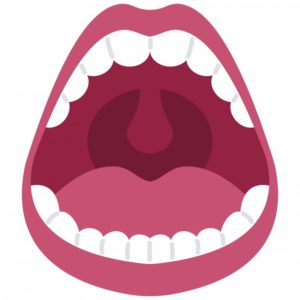
The first thing you learn about oral care is how to keep your teeth clean and healthy. Obviously, there is a lot more to your mouth than just your teeth, and the more you know about other aspects the better you can do for your oral health in general.
Some parts of the mouth affect your teeth and gums more than others and are crucial to preventing tooth decay and gum disease. Other parts often display symptoms of diseases such as oral cancer, providing important diagnostic clues for your dentist in St. Albans. Keep reading to learn more about the human mouth.
Your Temporomandibular Joints Are Essential
Your two temporomandibular joints facilitate your ability to chew, speak, and swallow. They also enable your mouth to open and close, as well as allow you to move your lower jaw forward and side to side.
These joints are located on both sides of your head near your ears and work together with your jawbone, facial muscles, and ligaments. Any disruption to the synchronization of this pair, which can happen if you grind your teeth at night, can result in facial pain, difficulty in chewing, and jaw stiffness.
Your Gums, Alveolar Bone, and Salivary Glands Help Your Teeth
Your mouth’s gum tissue holds your teeth in place and protects the roots from decay. You may be familiar with gum disease, and the main symptoms include swelling and chronic bleeding. These warning signs are important because unchecked gum disease can lead to tooth and bone loss.
On the other hand, the alveolar bone is not a well-known portion of the mouth. The roots of your teeth anchor them in your jawbone. The alveolar bone surrounds the roots to stabilize the teeth.
You have six salivary glands that produce the clear liquid known as saliva, which is made up predominantly of water and contains substances that break down food to begin the digestive process. Saliva also moistens your mouth to help with speaking, chewing, and swallowing.
Plus, it washes bacteria from your teeth and gums. The proteins and minerals in saliva play a vital role in protecting the enamel, as well.
What Role Do Your Lips, Cheeks, and Tongue Serve to Assist Your Teeth?
Your lips and cheeks contribute to everything from forming your facial expressions to breathing to speaking. They also keep food and saliva in your mouth while you chew. These strong muscles brace your teeth to keep them in the proper position.
The tongue is another powerful muscle that facilitates chewing, swallowing, speaking, and tasting food. Taste buds, sensory receptors on your tongue, enable you to enjoy the food you eat. In fact, the human tongue can have up to 10,000 taste buds, which help you detect sweet, salty, bitter, and savory flavors.
The pressure that the tongue applies within the mouth helps the oral cavity maintain its shape and keeps the teeth in their proper position.
When you are taking care of your teeth, make sure not to neglect other parts of your mouth. Floss, brush your tongue, rinse with an antimicrobial mouthwash, and visit your dentist in St. Albans regularly so they can check your entire mouth for signs of disease and keep your oral health in good standing.
About the Practice
At St. Albans Dental, whether you need advanced dental services or just a routine checkup and cleaning, you’ve found the right place. Our on-time appointments are customized to meet your needs and exceed your expectations. We will take care of all treatments at our office location, and you can always arrive anticipating a comfortable atmosphere. As much as we do love to talk about teeth, there definitely is a lot more going on in your mouth. We’ll be happy to follow up on any questions about this blog post. To make an appointment for any of your dental care needs, visit our website or call (802) 524-4844.
